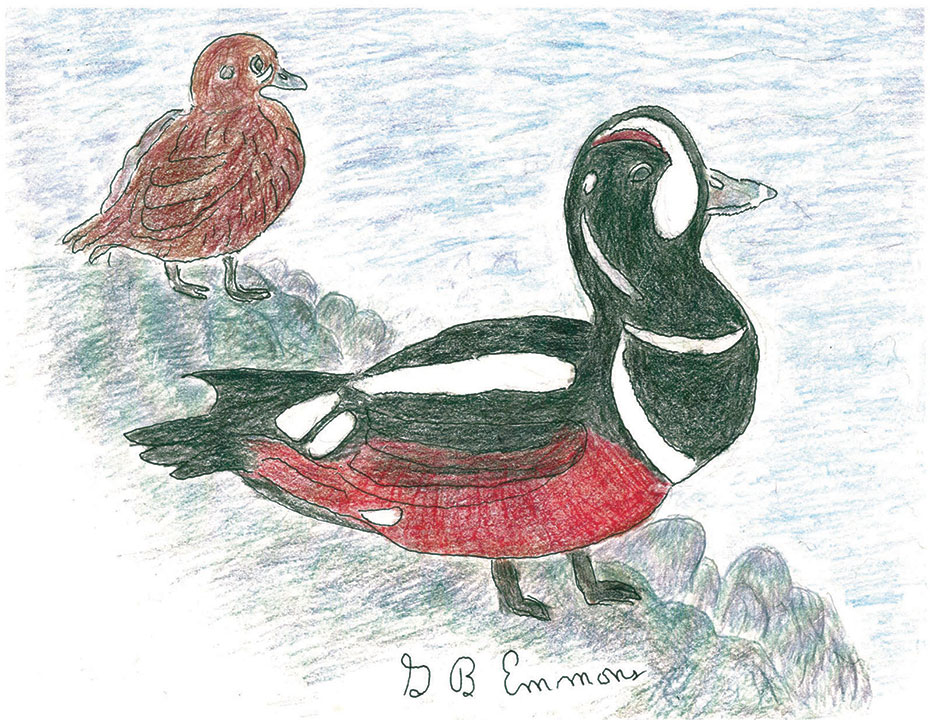This colorful diving duck is considered by bird watchers to be the crown jewel of coastal waters because of a wild pattern of bold, dark crescent markings and white stripes on its body, and a gleaming white triangle on its head, bordered by a chestnut streak bordering a royal black crown on its head.
Sometimes males and females are titled as lords and ladies of their species because of their noble plumage pattern and their stately courtyard bearing. While the males may be stunning and princely, the females are a very dull and drab dark brown, as illustrated, colored by mother nature to camouflage inconspicuously on her nest while incubating eggs. In stature, however, they both possess a unique stately stature of appearance on or at the water’s edge.
Large-scale autumn migrations here from the Hudson Bay or Labrador regions are rarely detected far out to sea for this diving duck species, as almost half of their activities are diving underwater in pursuit of small-bait fish, a vital part of their total diet that makes up their body chemistry and fishy odor.
Underwater, their plumage becomes smooth with tightly packed feathers that trap a lot of air within them. This packing insulates their small bodies against northern chilly waters and also makes them buoyant to bounce like corks coming up to the surface after deep diving. They are a spectacle to guess where they are where and when to resurface after a long period of time. Around here, they adapt to dabble like other ducks for mollusks, crustaceans, and insects, often tipping up near shore like mallards.
After heavy weather, we can spot them near pounding-surface and white water, standing on rocky outcroppings, looking out to a surging sea. While next month’s annual migration south has in recent years included extended coastal flyways reaching eastern Florida peninsular, their North American population is declining and considered endangered.
Possible causes include loss of habitat due to hydroelectric projects and loss of life due to oil spills near their coastal migration routes. Harlequins in flight are becoming less common, even in flight, hard to recognize at a distance with swift wingbeats, but slower than other ducks, with smaller flocks of fewer than 15 birds in short wedges and loose lines. However, in the blink of a bird-watching eyelash, they have passed by like the flight of every day in the time of our own lives.
Now, as the earth slowly turns on its axis to face the sight of the northern hemisphere away from direct rays of the sun, the autumnal equinox is upon us. The panorama of sea bird migrations is a seasonal moment of global rotation, orchestrated by the planets in the heavens, and can now be registered in our environmental awareness of the noble Harlequin duck and its chances of a future rotation of earthly migration.
By George B. Emmons
